Discover 9 hidden attractions, cool sights, and unusual things to do in Iturup (Russia). Don't miss out on these must-see attractions: Chirip, Atsonupuri, and Lvinaya Past. Also, be sure to include Baransky in your itinerary.
Below, you can find the list of the most amazing places you should visit in Iturup (Sakhalin).
Table of Contents
Chirip
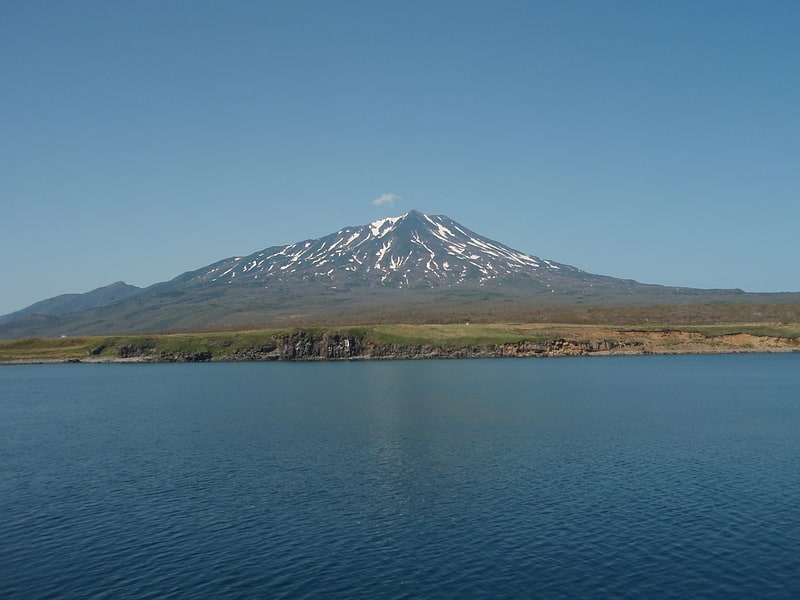
Also known as: Чирип
Volcano in Asia. Chirip is a volcano located in the central part of Iturup Island, Kuril Islands, Russia. In lies on the Chirip Peninsula and comprises two twin stratovolcanoes, Chirip and Bogdan Khmelnitskii. The western side is the steepest, sharing a basin, with a small lake with Bogdan Khmelnitskii. Basin has features that were created during an eruption. Many types of lava found are basalt, and andesite, small amounts of Dacite found.[1]
Atsonupuri
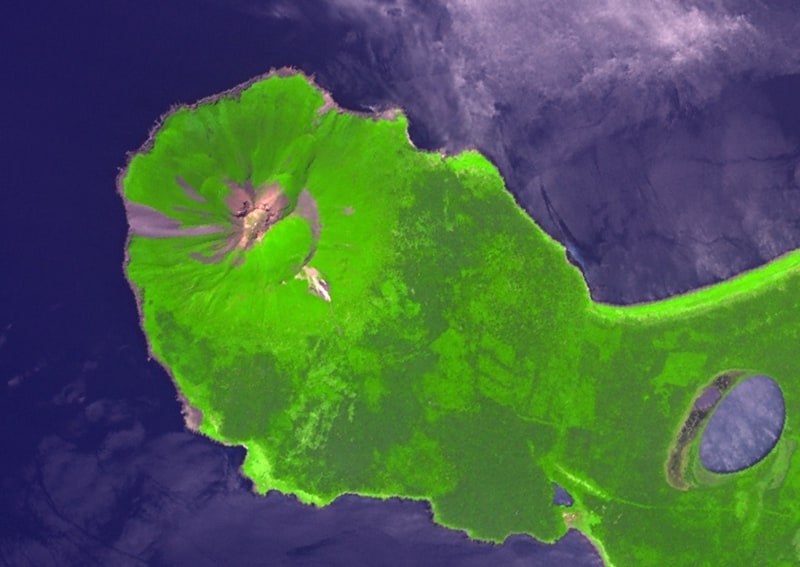
Also known as: Атсонупури
Stratovolcano in Asia. Atsonupuri is a stratovolcano located in the central part of Iturup Island, Kuril Islands, Russia.[2]
Lvinaya Past

Also known as: Львиная Пасть
Volcano. Moekeshiwan, also known as Lvinaya Past, is a volcano in the southern part of Iturup in the Kuril Islands, claimed by Japan and administered by Russia. The volcano is characterized by a large caldera that is flooded by the Sea of Okhotsk. A large eruption occurred early during the Holocene which reached a volcanic explosivity index of 7.
Iturup island contains about nine stratovolcanoes, some pyroclastic cones, one somma volcano and several geothermal fields. Among these, Lvinaya Past is formed by a 7-by-9-kilometre (4.3 mi × 5.6 mi) wide and 550-metre (1,800 ft) deep caldera, which is connected with the Sea of Okhotsk by a 5-kilometre (3.1 mi) wide and maximally 50-metre (160 ft) deep strait. The volcano is 528 metres (1,732 ft) high, almost 1 kilometre (0.62 mi) above the bottom of the caldera. The caldera lies close to the southernmost point of Iturup and is flanked to the east by the Urbich volcano and to the southwest by the Berutarube volcano. The isthmuses east and southwest of Lvinaya Past are covered by its eruption products.
Large eruptions took place 13,000 and 12,300 years ago, and a major eruption occurred 7480 ± 80 BC. The submarine caldera formed during this eruption and heavily altered the topography on Iturup, generating an ignimbrite which joined the three southernmost volcanoes of Iturup to the main island. The total volume of tephra ejected amounts to 170 cubic kilometres (41 cu mi). This eruption had a volcanic explosivity index of 7, making it one of the largest eruptions that are known to have occurred in the Kuril Islands, and the strongest known to have occurred during the Holocene in the Southern Kurils.
Ice cores taken in the Siberian Altai demonstrate increased sulfate concentrations at the time, possibly stemming from large sulfate release by the eruptions of Lvinaya Past and contemporaneous large scale activity at Caldera Fisher in Alaska and Pinatubo in the Philippines and may relate to the Younger Dryas event. Habitats may have been destroyed to distances of 50 kilometres (31 mi) from the volcano. The development of alder-containing birch forests in the region may have been favoured by the ash fall from the eruption, which would have killed more susceptible conifers. The impact of the eruption may have extended all the way to southern North America.
Lvinaya Past has erupted tholeiitic magmas with a low potassium content. Other rocks include andesite, basaltic andesite, basalt, dacite and picrite. The caldera-forming eruption ejected dacitic material with hornblende and quartz forming phenocrysts. Other volcanoes on Iturup include Astonupuri, Baransky, Berutarube, Bogatyr Ridge, Chirip, Demon, Golets-Tornyi, Grozny Group, Medvezhy and Past.[3]
Baransky
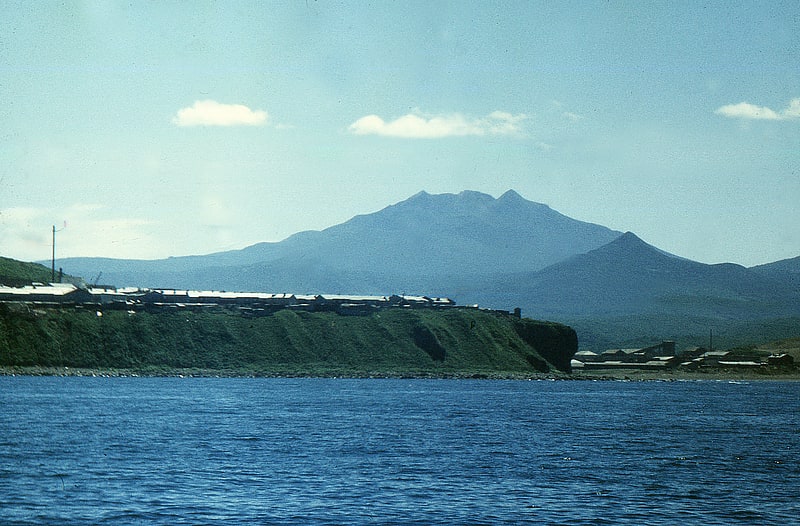
Also known as: Вулкан Баранского
Stratovolcano in Asia. Baransky is a stratovolcano located in the central part of Iturup Island, Kuril Islands, Russia.
The volcano is named after Nikolay Baransky, Soviet economic geographer. Its only known eruption occurred in 1951 and was cited as only minor activity.[4]
Bogatyr Ridge
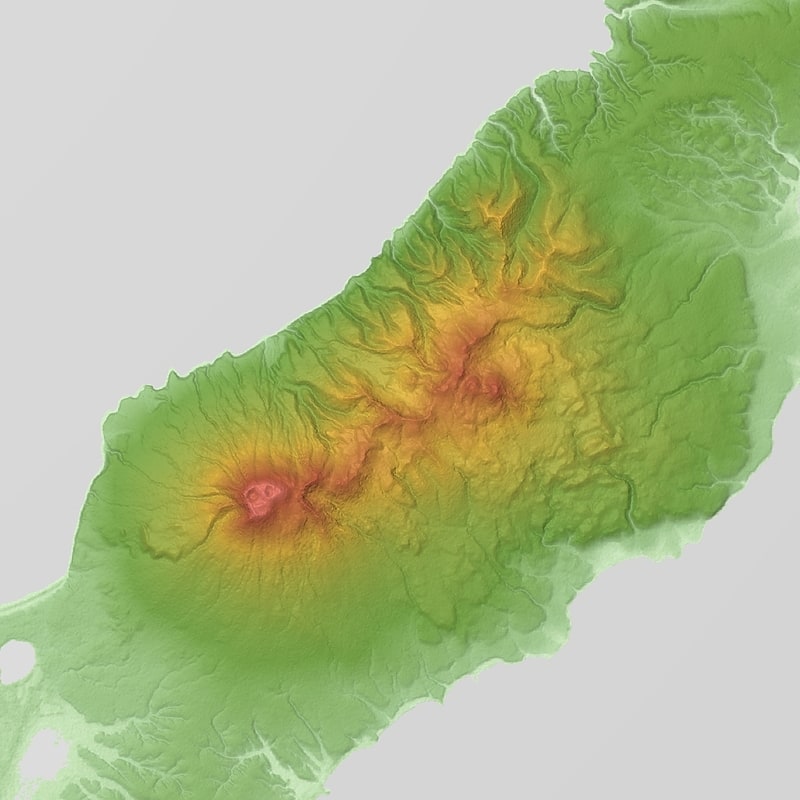
Also known as: Богатырь
Stratovolcano in Asia. Bogatyr Ridge is a stratovolcano located in the central part of Iturup Island, Kuril Islands, Russia. The highest peak of the ridge is Stokap which is also the highest peak of the island.[5]
Ilya Muromets Waterfall
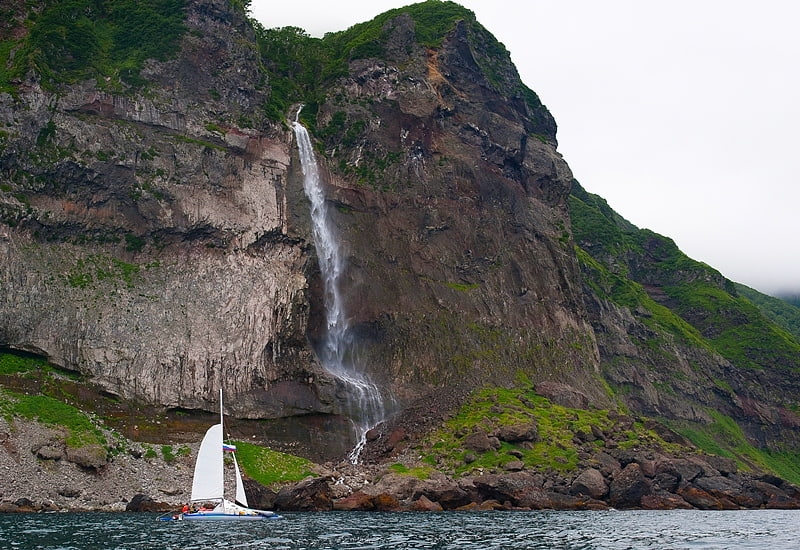
Also known as: Илья Муромец
Waterfall in Asia. Ilya Muromets, named after the East Slavic folk hero, is a very steep vertical waterfall on the Bear's Peninsula of Iturup, one of the Kuril Islands. The water stream falls abruptly from the eastern slope of the Demon Volcano into the Pacific Ocean. With a height of 141 meters, it is one of the highest waterfalls in the Russian Far East. Ilya Muromets is rarely seen by tourists, however, because it can be accessed only by boat.[6]
Grozny Group
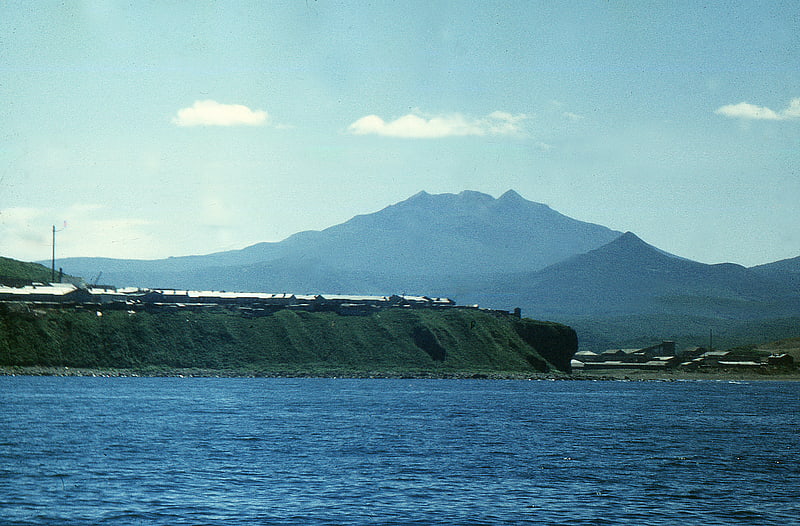
Also known as: Грозный хребет
Complex volcano. Grozny Group is a complex volcano located in the central part of Iturup Island, Kuril Islands, controlled by Russia, and claimed by Japan. There is an ongoing eruption there.
There are at least two named volcanoes:
- Japanese: 小田萌山 Odamoi yama
- Japanese: 焼山 Yake-yama Russian: Иван Грозный Volcan Ivan Grozny
Ivan Groznyi
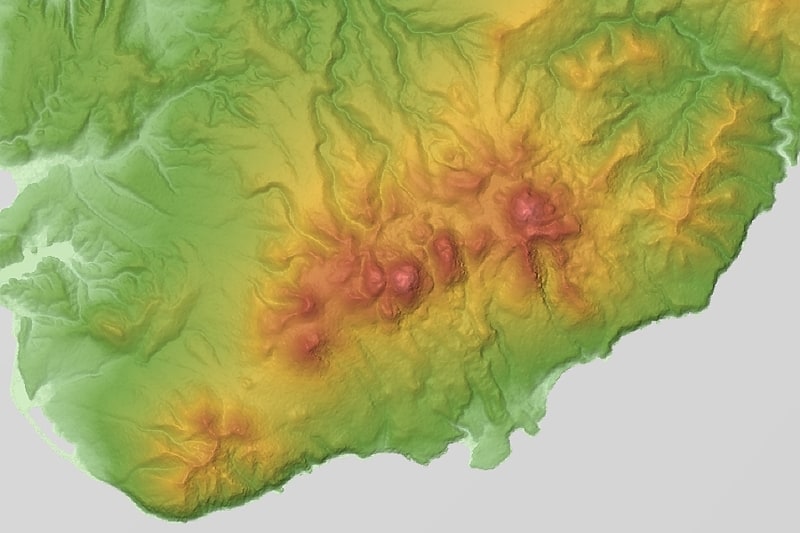
Ivan Groznyj - active stratovulkan with a height of 1158 m a.s.l. belonging to the strand of volcanoes Chriebiet, located in the central part of the Russian Isurup island in the archipelago of the Kuril Islands. The Russian name of the volcano comes from the Grand Duke of Moscow Ivan IV Terrible.
Bogdan Hmelnitskiy
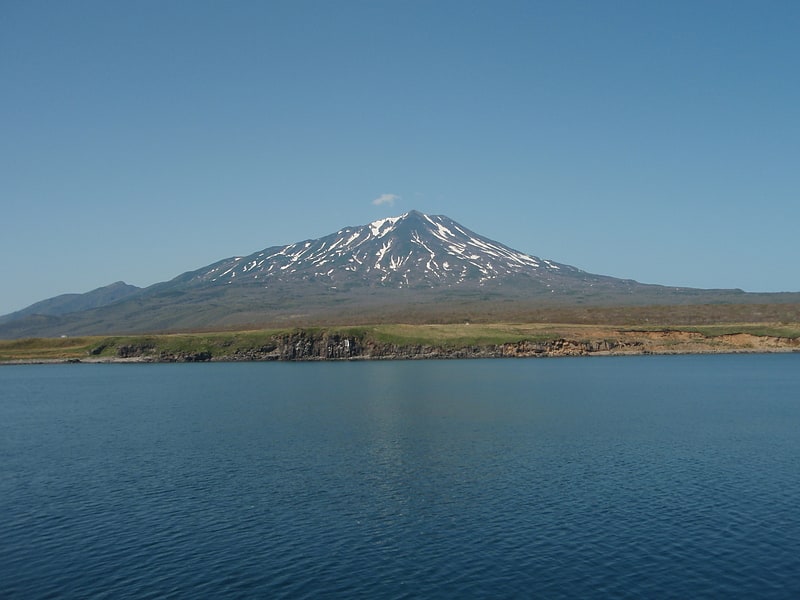
Bogdan Khmelnitsky is an active volcano on the island of Iturup in the Great Kuril Ridge.
Refers to the type of Holocene stratovolcano. Its height is 1585 m. Located on the Chirip Peninsula, in the southern part of the Dvuhorky Range. It is composed mainly of basalts.
The eruptions of 1843 and 1860 are known. At present, fumarolic and thermal activity is recorded. Fumaral activity is evident on the southwestern slope and near the foot of Goryachaya Mountain.
Named after the statesman and military leader Bohdan Khmelnitsky.
There is a Chirip volcano 4 km to the north.